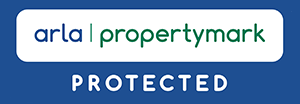As a landlord it’s useful to understand the Landlord and Tenant Act 1985 and how it impacts both you as a landlord and tenants too. This Act consolidates and amends laws relating to landlord and tenant responsibilities, ensuring fair practices in the housing sector.
As West London estate agents we recognise the importance of this legislation but also appreciate that it can be a large amount of information to digest, this guide seeks to help you navigate your responsibilities as a landlord.
Key Provisions of the Act
The Landlord and Tenant Act 1985 is pivotal in England and Wales, fundamentally shaping landlord-tenant relations. It clearly delineates their rights and duties, and offers a blueprint for resolving disputes.
Key points include many factors that good landlords will take as a given such as a tenants’ right to a safe, livable space, landlords’ duty to maintain standards, and the necessity of a written tenancy agreement, specifying rent, tenancy length, and mutual responsibilities.
The Act also empowers tenants with rights like knowing their landlord’s identity, challenging exorbitant rent increases and having their deposit safeguarded by a government-backed scheme.
Regularly updated, the latest changes in 2019 were aimed at enhancing clarity and consistency and suggested by the Law Commision.
1. Disclosure of Landlord’s Identity (Section 1)
Landlords must provide their name and address within 21 days upon a tenant’s request. Failure to comply can result in a fine, emphasizing transparency in landlord-tenant relationships.
2. Corporate Landlord Disclosure (Section 2)
If a landlord is a corporate entity, tenants can request the names and addresses of directors and secretaries. This provision ensures tenants know who is accountable in their housing management.
3. Notification of Landlord’s Interest Assignment (Section 3)
New landlords must notify tenants of any change in ownership. This clause is vital for continuity and clarity in the landlord-tenant relationship.
4. Provision of Rent Books (Section 4)
For weekly rent arrangements, landlords must provide a rent book, fostering clear and recorded rent transactions.
5. Fitness for Human Habitation (Section 8)
Homes must be fit for living at the tenancy’s start and maintained throughout. This part of the Act aligns with basic human rights for safe and healthy living conditions.
6. Agricultural Worker Provisions (Section 9)
Special conditions apply for agricultural workers, acknowledging their unique employment and living circumstances.
7. Fitness for Human Habitation in England (Section 9A)
This section, applicable to England, underscores the landlord’s responsibility to ensure dwellings are habitable.
8. Hazard Remediation (Section 10A)
Landlords must address hazards in social housing leases, stressing the importance of safe living environments.
Implications for Landlords
- Transparency and Communication: Promptly responding to tenant requests regarding landlord identity and property ownership changes is not just a legal requirement but also forms the basis of trust.
- Property Maintenance: Ensuring properties are habitable and safe is a legal obligation. Regular maintenance checks can prevent legal issues and enhance tenant satisfaction.
- Rent Record Keeping: Providing rent books for weekly payments is crucial for financial transparency.
- Adapting to Changes: The Act has evolved, and landlords must stay informed about changes, especially concerning human habitation standards and hazard management.
Rights and responsibilities of landlords
The act states several rights and responsibilities of landlords that need upholding when renting out their buy-to-let properties.
Inspection
As a landlord, you have the right to inspect your property periodically, but you must give the tenant reasonable notice before doing so. Notice periods are typically 24 hours, although it can be longer if agreed with the tenant. Inspections should respect the tenants right to privacy, ideally occurring a maximum of twice a year and at reasonable times.
Repairs
It’s your responsibility to keep the property in good repair and working order, attending to maintenance issues that are no fault of the tenant. This can include everything from a broken boiler to leaks in the bathroom. Issues should be addressed promptly with continuous communication with the tenant throughout.
Insurance
Landlords building insurance is usually a requirement of the mortgage lender if you buy your property using a mortgage. But even if you own it outright, you should still have the necessary insurance as it can cover you for the structure and fixtures and fittings, as well as other aspects like guaranteeing the rent if the tenant can’t pay.
Documents
You must provide the tenant with a series of documents, including a copy of the tenancy agreement, a gas safety certificate, and energy performance certificate (EPC). Failure to do so could result in legal action against you. You also need to conduct Right to Rent checks.
Rights and responsibilities of tenants
Tenants are entitled to certain rights once the tenancy commences and have responsibilities while living in the property, including the right to:
- Live in a safe and habitable living environment
- Know their landlord’s identity
- A written agreement outlining the details of their stay
It’s also necessary for tenants to keep the property clean and tidy during their stay. Any maintenance issues should be reported to the landlord in a timely manner so that the issue doesn’t get worse. Failure to do so could see them lose their deposit when moving out of the property,
Tenants are also protected against unfair evictions and excessive rent increases, and have their deposits safeguarded in government-approved schemes.
Tenants have the right to know their landlord’s identity, understand the terms of their tenancy, and live in a habitable environment. These rights empower tenants, fostering a more balanced landlord-tenant relationship.
Understanding the Landlord and Tenant Act 1985
The Landlord and Tenant Act 1985 is a cornerstone in regulating landlord and tenant interactions. Comprehending and applying these principles is not only a legal necessity but also a step towards ethical and successful property management.
A well-informed landlord is an effective one: Stay updated, stay compliant, and ensure your tenants’ rights are always upheld.
For any property-related matter, get in touch with our team who would be happy to assist.





